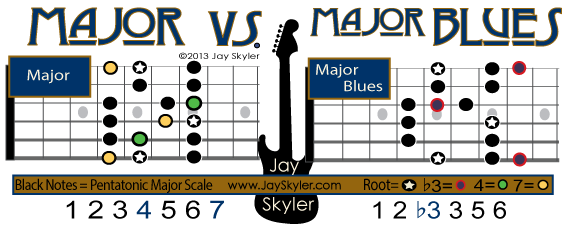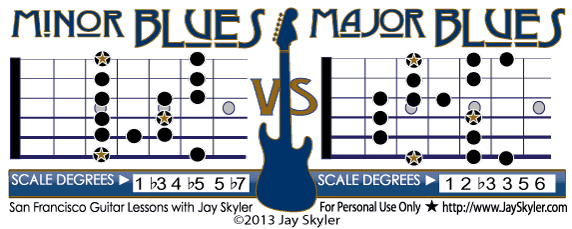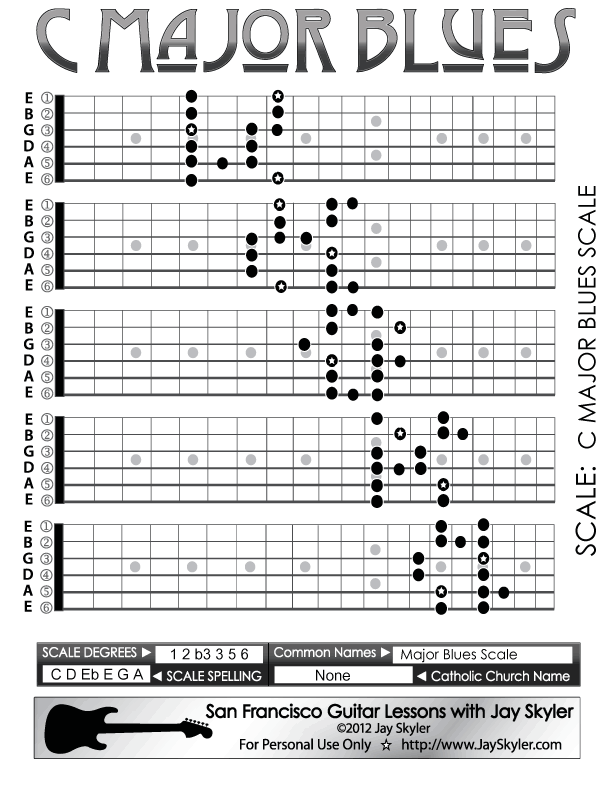Major Blues Scale Guitar Fretboard Patterns- Chart, Key of C
by Jay SkylerGuitar Lesson Summary & Chart Explanation
C Major Blues Scale
The Guitar Fretboard Diagrams show all 5 CAGED system forms of the Major Blues Scale on the guitar neck in the key of C.
The Major Scale vs. The Major Blues Scale

The Major Blues scale drops the fourth and seventh scale degrees from the Major scale and adds a flatted third scale degree (
The Blues Scale vs. The Major Blues Scale

Unlike the Major or Minor scale, which have functional (meaning they sound good at least sometimes) modes built on every note in the scale, the Blues Scale only has one functional mode, the Major Blues scale mentioned above. The Major Blues scale is built on the flatted third scale degree (
The Minor Blues Scale, not the Major Blues, is "Standard"
The Minor Blues scale is the far more commonly used scale of the two, so as in the norm in music, it gets shortened to "The Blues Scale."
Its just like with chords. If I asked you to play a G chord you would (I hope) play a G Major chord. Since the most common type of chord is major we can shorten the name of G Major chord to just G chord. So when we say "the Blues Scale" we are just using a shortened name for the Minor Blues Scale. If we want to refer to the Major Blues scale we must say "Major Blues Scale".
Using The Major Blues
The Major Blues Scale can be used wherever the Pentatonic Major scale is used. It will give it a bit more "bite" with the addition of the flatted 3rd scale degree. It will also give you a hexatonic scale which will run more naturally in 3 and 6 rhythms. A common strategy is to use it in conjunction with the Minor Blues scale over a 12 Bar Dominant Blues Progression. The usual "Chicago Blues" way to do this is to use the Major Blues any time the I7 chord appears in the first 8 bars, and to use the Minor Blues over the rest.
The Major Blues Scale is usually a safe choice against both Dominant and Major progressions. See:
- Major Scale Guitar Fretboard Patterns- Chart, Key of C
- C Ionian Mode Guitar Scale Patterns- 5 Position Chart
- Dominant 7th Scale Guitar Patterns- Chart, Key of G
- G Mixolydian Mode Guitar Scale Patterns- 5 Position Chart
Blues (Minor Blues) Scale Guitar Patterns- Chart, Key of A

